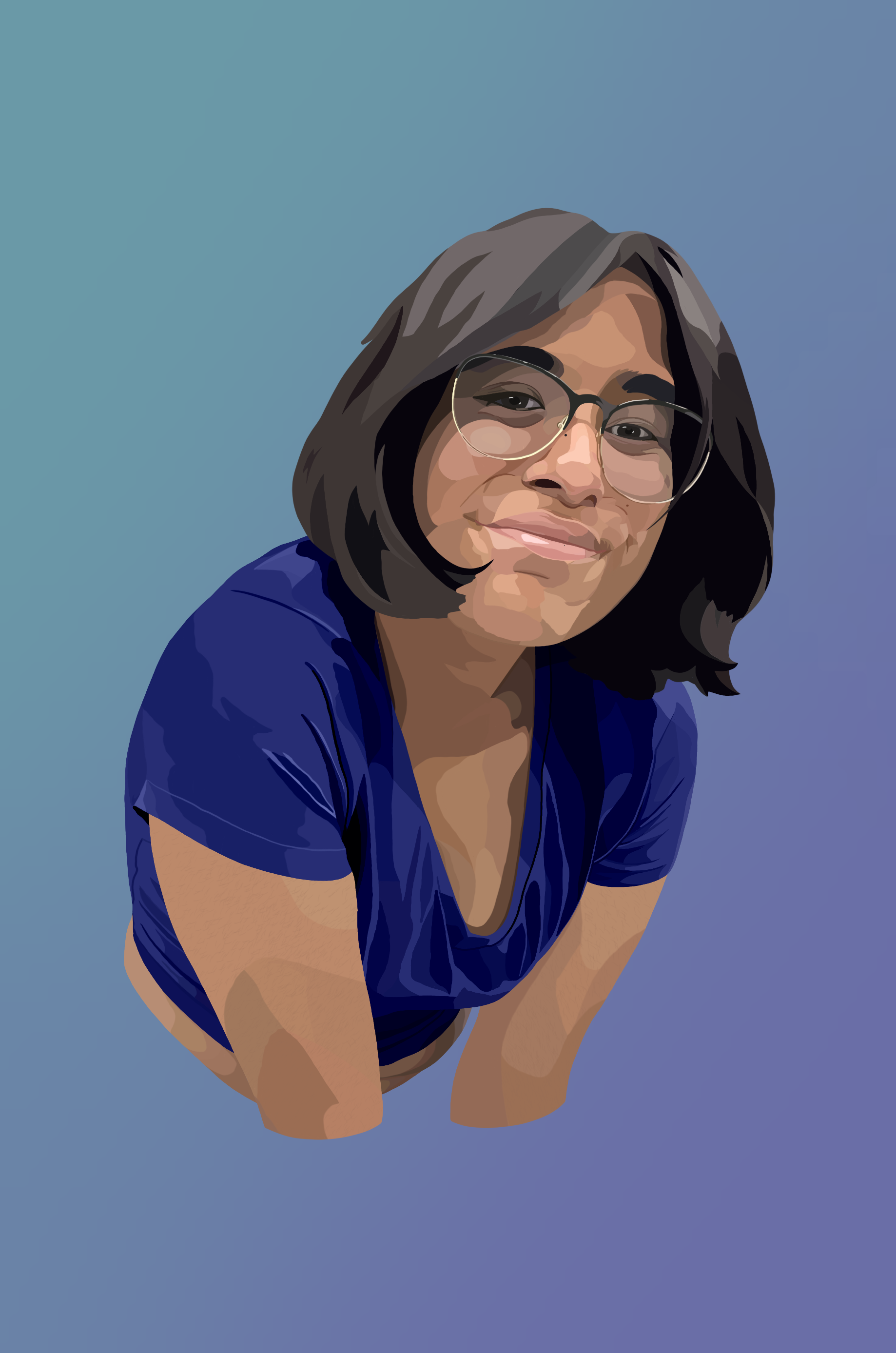Illustrated by Christopher Ikonomou (Xe/He)
This article was originally published in our Spring 2022 print issue “Reflections of Radiance.“
The hardest part about being a Brown person who was socialized as a girl was enduring the constant jabs about my hair. I hit puberty at 9, which meant that there were years and years of constant insecurity about my hair. It was too much, too messy, and there was always hair in all the wrong places. The hair on my head was beautiful, thick, and long, but the hair on my body was ugly, thick, and wrong. As a Brown person, my facial and body hair were always under scrutiny, especially because my hair grew at faster rates (and was much thicker) than my other peers. I was tormented for my Frida Kahlo-like brows, for my arms that looked like a werewolf’s, for my body not being up to par with white, cishet beauty standards. One time, my aunt cruelly joked that she was going to gift me money for laser hair removal because the hair on my arms was too much for her.
My mom was always reluctant to let me cut my hair. She wanted me to keep it long when I was younger, mostly to symbolize empty promises of quinceañeras to other family members and to possibly help me find un novio. I despised the hair on my head. Although my hair was straight, I could never control it. It was thick, messy, unruly, and always tangled. Even when I brushed it out, I would come back home with some pretty gnarly knots in my hair. My long hair was inconvenient, and my mom’s claims that keeping my hair long would make me look more feminine did not sway my opinion. She’d make sure that the hair on my head grew out, but the hair on my face and on my arms were problems that needed to be fixed.
In the winter of my senior year of high school, my relationship with femininity was becoming muddled by my blossoming inquiries into androgyny. My mom finally let me cut my hair after years of it torturing me. I remember looking into the mirror and noticing that the haircut made my face just a little bit sharper. My facial hair had grown out a little by then, and I looked the most masculine I had in a while. I remember thinking to myself, “I like the way this looks… A lot, actually.” For the first time in a while, I felt confident in the way I looked, and I felt secure in who I was.
That was the first time I experienced queer joy, but even then I was reluctant to allow myself to feel that joy. The nagging thoughts of my hair, and what other people thought, scared me. I had been conditioned to feel that the hair on my head had to be long and that my body had to be as smooth as a baby’s.
“That was the first time I experienced queer joy, but even then I was reluctant to allow myself to feel that joy.”
I stuck to a schedule of monthly waxing and weekly shaving. I spent $75 every few months to get rid of my facial hair. My Frida Kahlo unibrow and my mustache were removed from my face, and my legs were shaved (although my arms stayed the same).
Then the pandemic happened, and for better or for worse, it sent me through an identity crisis. That was my reason for allowing myself to grow my hair out, mostly because the world was hiding away from a deadly virus and there were no places I could have gone to be waxed (understandably so). By 2020, I was flourishing in my newly found queer identity.
Queer joy is not something you find right away What got to me the most was expression. I was always viewed as a little more masculine by default because my body had always been out of fashion in the cishet, white world. I struggled at first with getting used to the hair on my body; for months I was conflicted, torn between the joy from how androgynous it made me feel and the misery that societal expectations had placed upon me since I hit puberty. I didn’t exactly fall in love with the way I looked now overnight; my appearance had to grow on me. But when it finally did, it was the best feeling in the world. When I look in the mirror now, I feel queer joy. I feel content with who I am, and secure in my identity. Queer joy isn’t like fireworks; it’s more like taking a sip of warm coffee in a cold morning. It is a soft type of content, a feeling that washes over you as you finally realize that this is who you always were.
Credits:
Author: Judah C (They/Them)
Artist: Christopher Ikonomou (Xe/He)
Copy Editors: Jennifer Collier (She/They), Emma Blakely (They/She/He)

